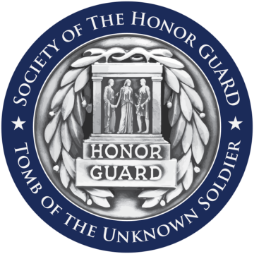Reflecting on the Vietnam Unknown
12 years ago

This is an abridged essay I wrote four years ago on Michael J. Blassie, the US Air Force lieutenant who would have been 65 years old today. 1LT Blassie was identified as the Vietnam Unknown in 1998.
Last week, I was sent to St. Louis to do a presentation for work. It was a great trip. Highlights included catching up with old friends, getting to see a Cardinals game, and even enjoying a classy speakeasy style cigar bar in the West End. It is truly a gem of a city, tucked away in the Midwest and now sits atop of my list of cities along the Mighty Mississppi. The presentation took place on the VA’s Jefferson Barracks campus outside the city. Adjacent to the campus is Jefferson Barracks National Cemetery, one of the largest in the national cemetery system. One day after the work for the day was completed; I made my way to the cemetery to visit a plot.
Michael J. Blassie grew up in St. Louis, attending high school at St. Louis University High School and found his way to Air Force Academy. He eventually became a pilot and went to Vietnam in 1972. In May of that year, on his 138th combat mission, he was shot down. Months later, a South Vietnamese patrol recovered pieces of bone as well 1LT Blassie’s identification card. The remains were sent for identification to a lab in Hawaii, but the documents identifying the remains were lost en route. The remains were marked as X–26, and later designated as the Unknown Serviceman from Vietnam. On Memorial Day in 1984, the Unknown from Vietnam was laid to rest. Of course, the story hardly ended there, and in 1998 evidence was produced to sufficiently convince Department of Defense officials to exhume the remains. Using DNA testing, the remains were identified as Micheal J. Blassie, and he was reinterred at Jefferson Barracks National Cemetery.
Having known some of the guards that were present at the time of Blassie’s disinterment, and considering my own bond to the Unknowns, I felt compelled to pay my respects. At the time of the disinterment, many of the guards felt like they were taking away a brother. Yet today, in speaking to those guards who participated in his disinterment, many feel that he is where he belongs. As one put it, "as painful as it was to watch him leave that night, it would have been selfish to expect him to stay. He’s right where he belongs, known to his family and those that cared about him. As much as the Unknowns represent, we all can only hope that there will never be anymore". The connection between the Tomb Guards and the Unknowns is more than a symbolic gesture, but one that permeates our very souls. The disinterment was a disruptive time at the Tomb, and I do feel lucky to have missed it entirely.
When visiting Blassie’s plot in St. Louis last week, I felt a great sense of closure on the matter. The grass is neatly trimmed surrounding his sparkling headstone. He lies in a section with many of his Air Force brethren. His family has erected a comfortable bench in his honor next to the plot. The cemetery has even dedicated a road in his honor.
Most striking in all this reflection was Blassie’s youth and unwavering faith in his country. I think it speaks volumes for the lengths we go through as Americans to honor those who have given all for their country. Blassie is one of hundreds of thousands who have died for the United States, and as a nation we provide more care (living and post mortem) for our veterans than any other in the world. My friends, in these days, that is something to be truly proud of.
Written by Benjamin Bell
Latest News
Missing In Action
Posted October 14, 2025Tomb of the Unknown Soldier Foundation John Hamre, Neale Cosby, Richard Azzaro, and Mick Kicklighter Dear Colleagues, This article is being forwarded to capture the work of Joe Neubeiser, Joe...
America's Appreciation
Posted October 14, 2025America’s Appreciation Benjamin Bell (2001-2004) Veteran’s Day I wear a lanyard at work. It says “US ARMY,” and I’ve adorned it with accouterments. There are two pins commemorating certifications...
The Ship in the Desert
Posted October 14, 2025The Ship in the Desert Larry Seaton, SHGTUS Historian 14th Tomb Guard Reunion We are all familiar with the connection between the USS Olympia and the WWI Unknown Soldier. The Unknown Soldier’s...
Support the Society
The Society of the Honor Guard, Tomb of the Unknown Soldier (SHGTUS) is able to provide our programs, events, assistance, scholarships, and services due to the generosity of its members, organizations, and individuals. SHGTUS does not receive institutional funding. Note: The Society of the Honor Guard, Tomb of the Unknown Soldier is a 501(c)(3) organization, so your contributions may be fully tax deductible.
Learn More
Did you know?
Is the rifle that the Sentinel carries loaded?
Tomb Guards carry fully functional M14 rifles. Given the current climate surrounding the relatively recent tragic events in Canada (attack upon the guard at the Canadian War Memorial), we will no longer be answering questions relating to specifics regarding current security and armament at the Tomb of the Unknown Soldier. We appreciate your understanding.
Rest assured, that the US Army has the post secured as it has been since we started guard duty at the shrine in 1926.

